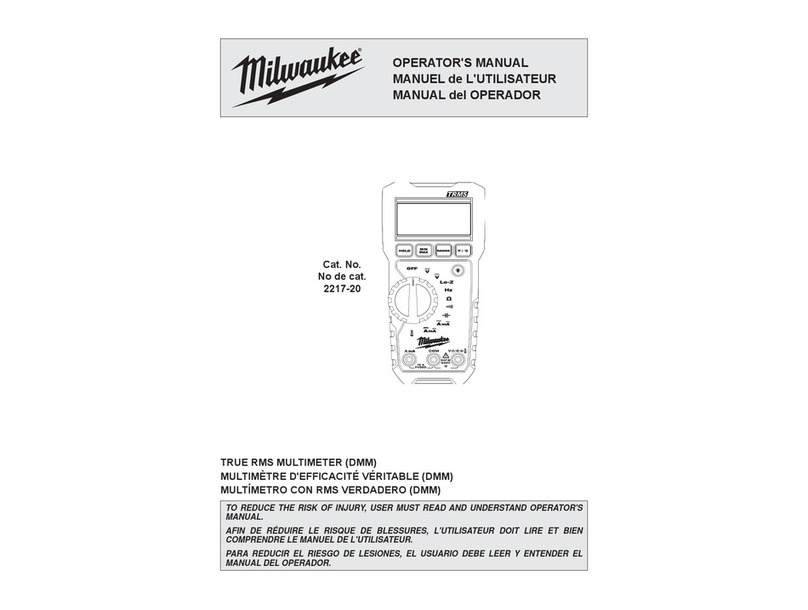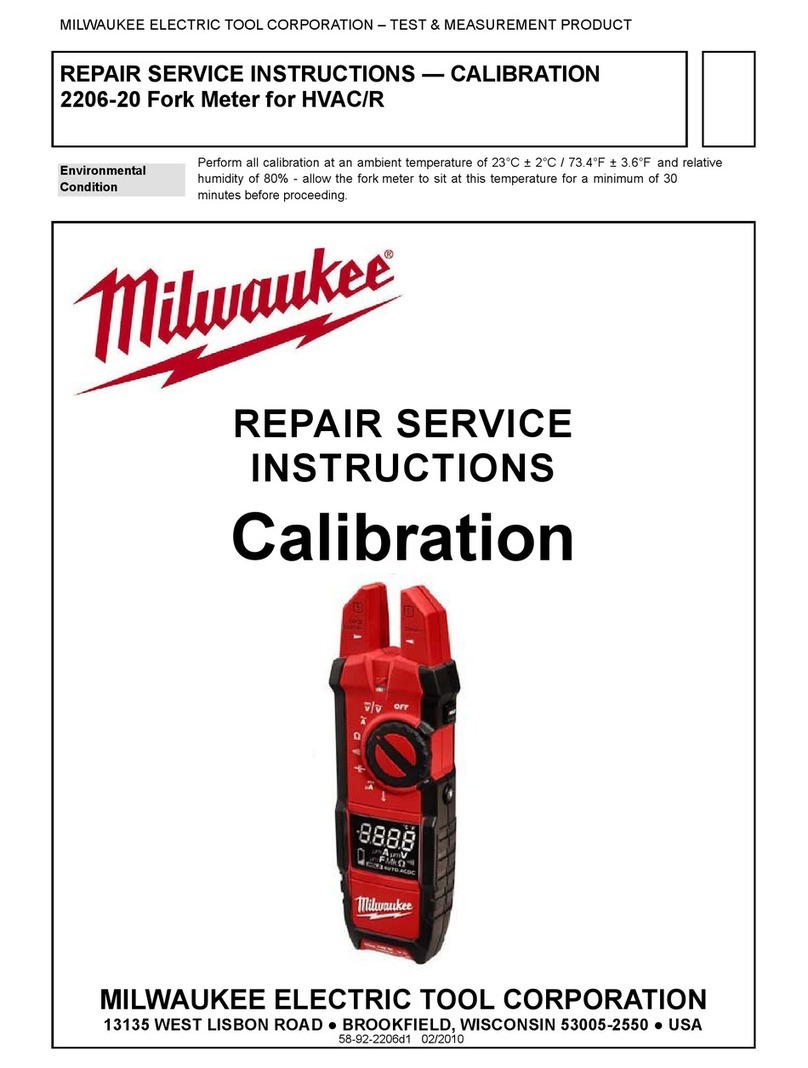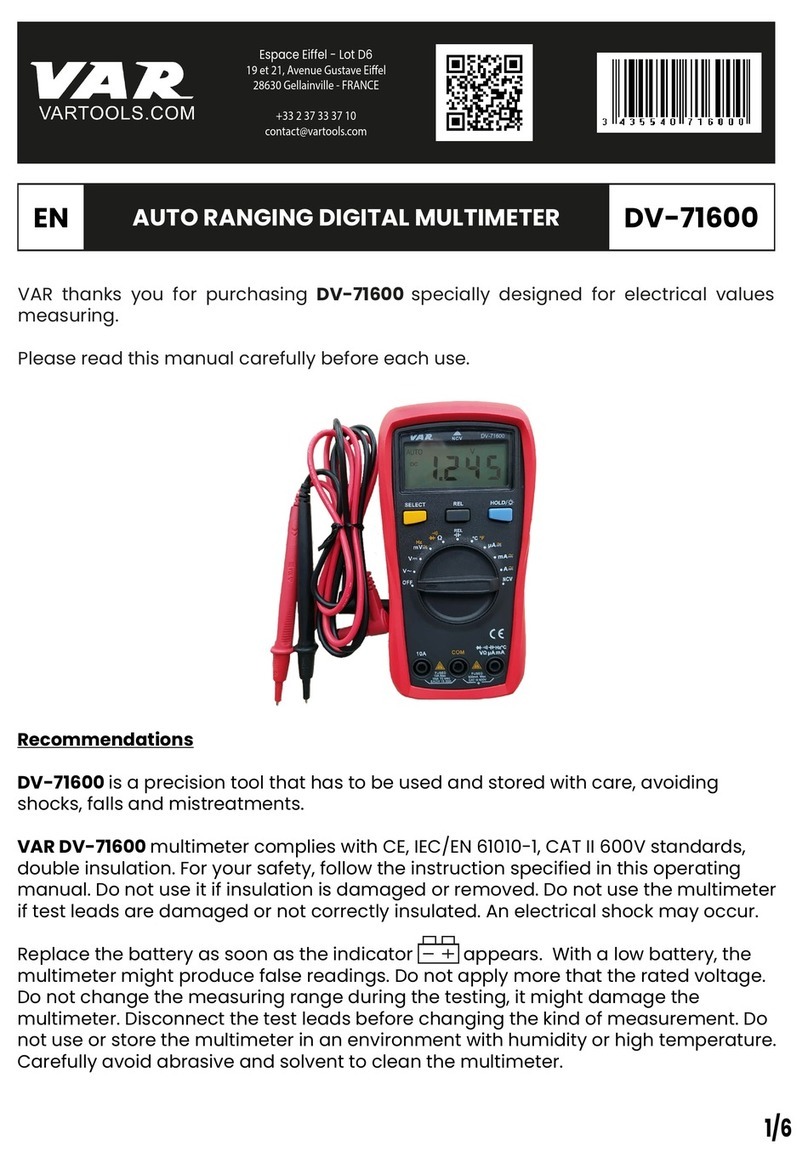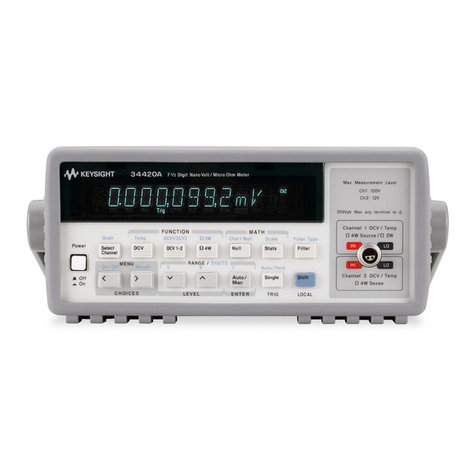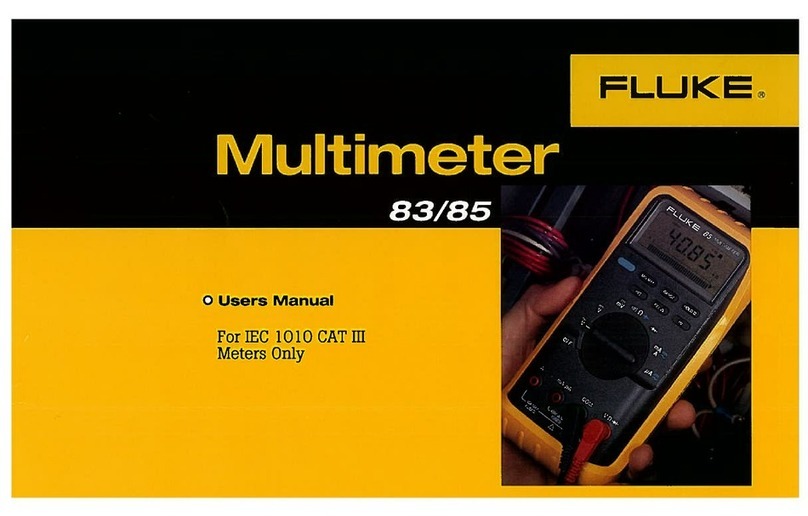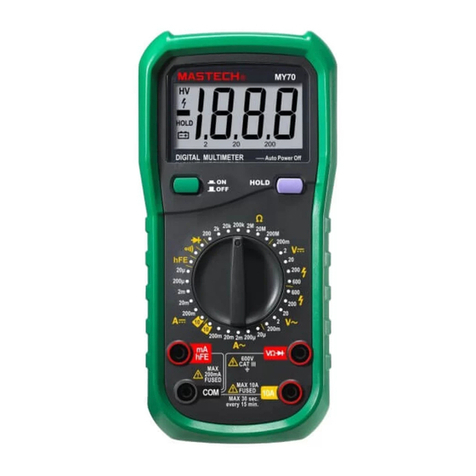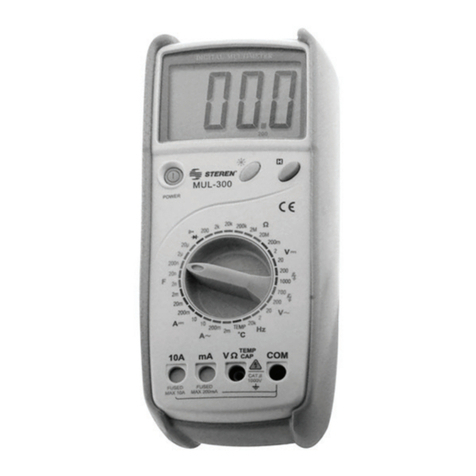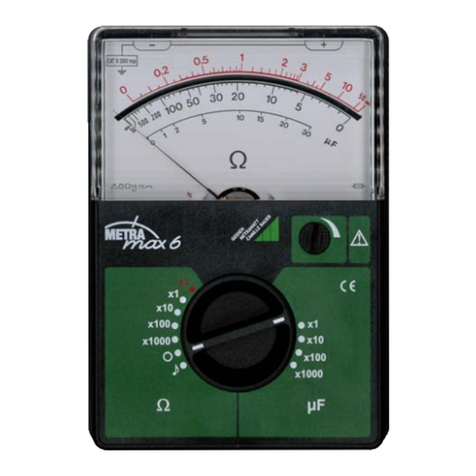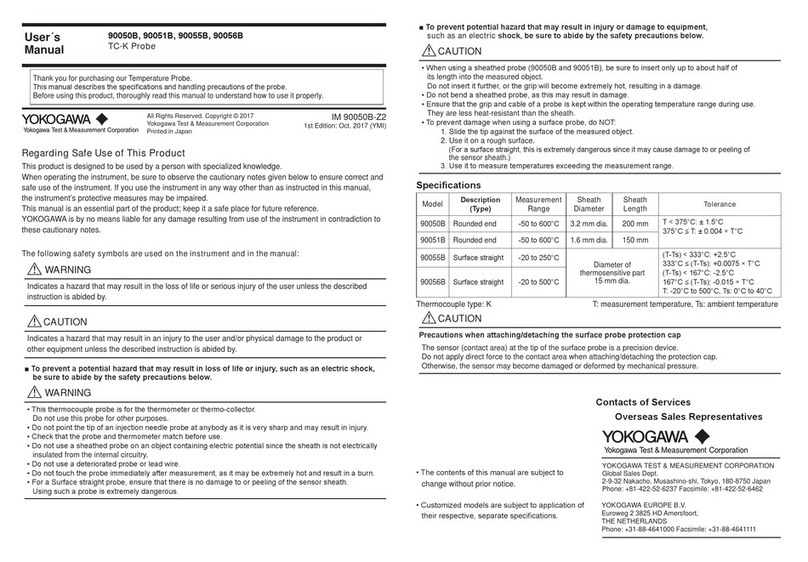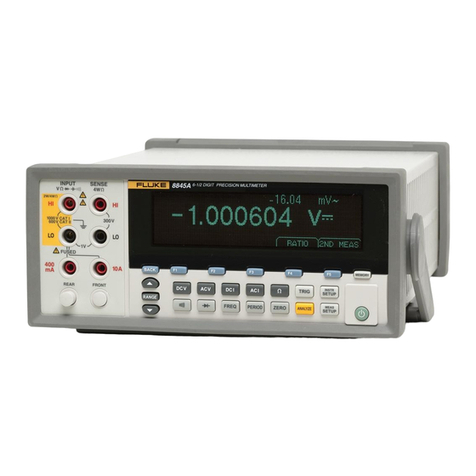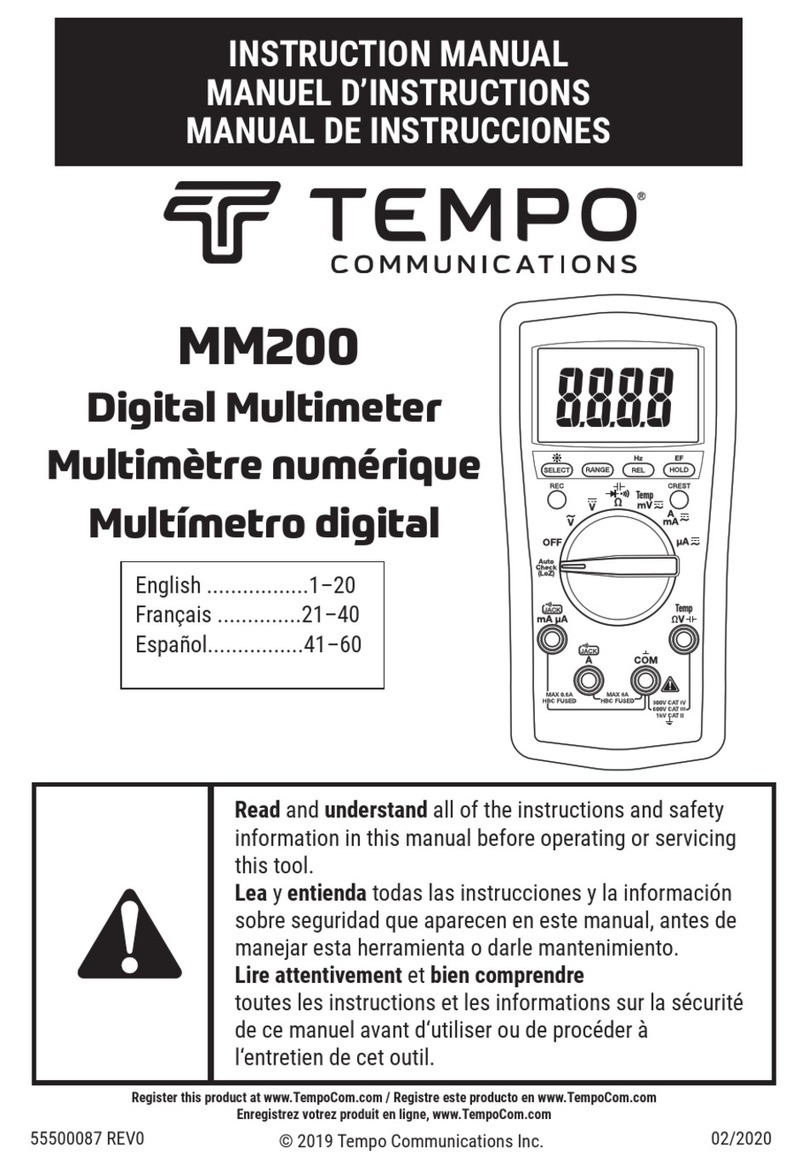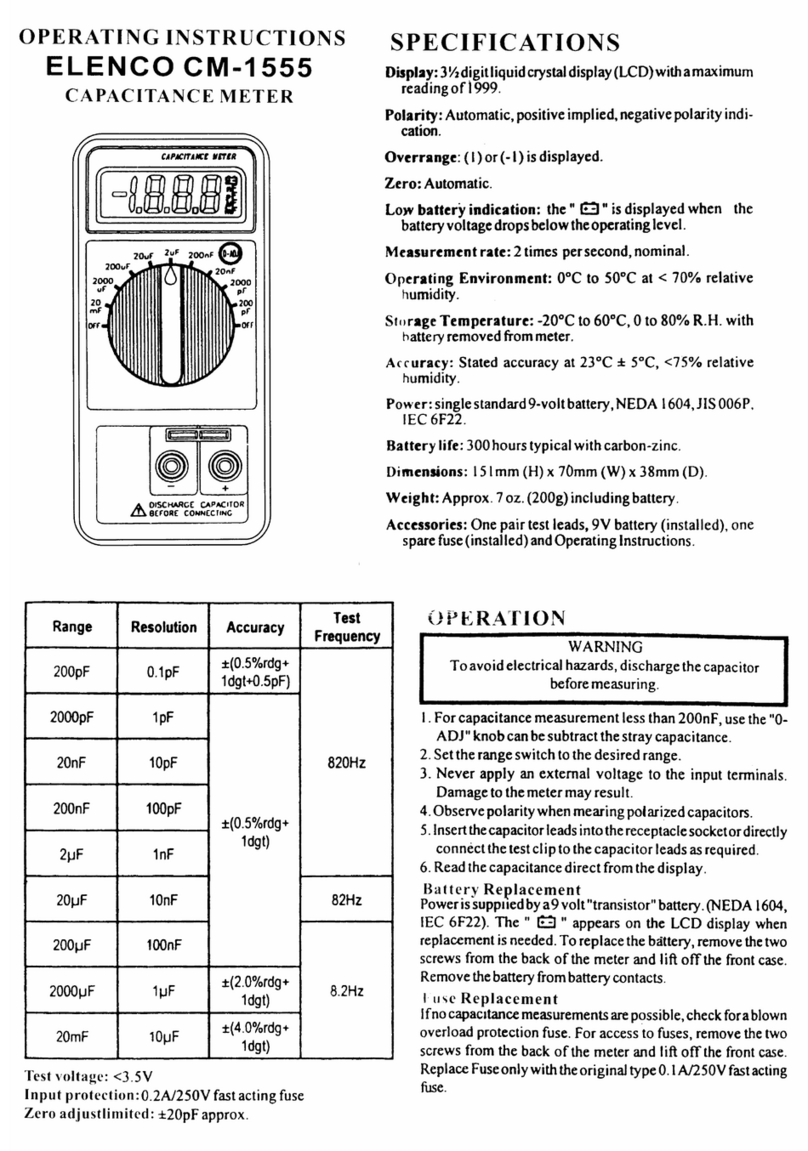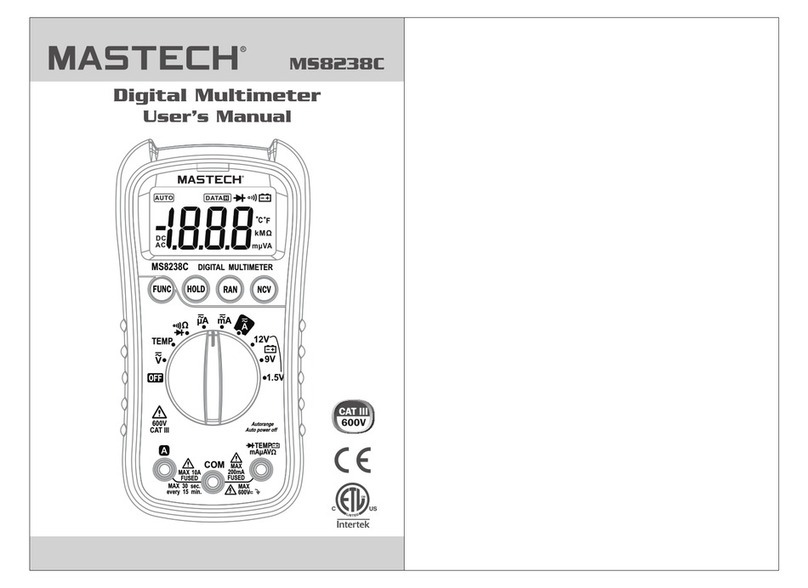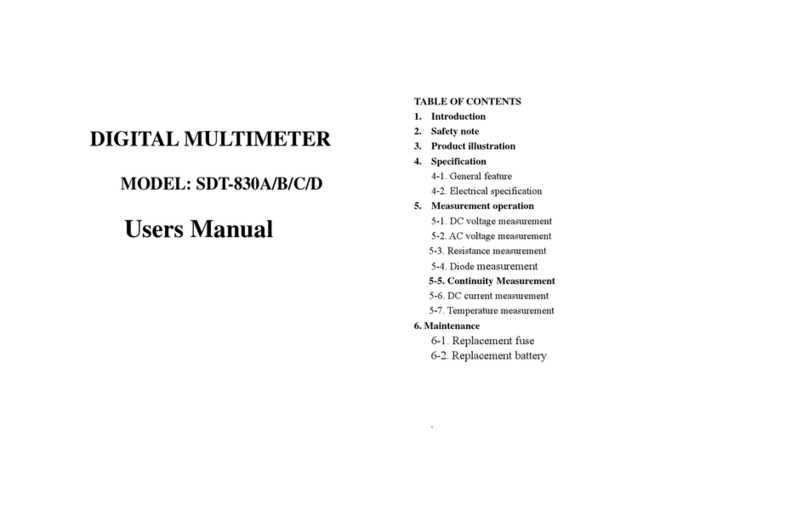
Resistance
1. Set the Dial to position.
2. Connect the red test lead to the
Vterminal and the black test
lead to the COM terminal.
Confirm “OL” is indicated on
the display, and then short-
circuit the tips of test leads to
make the indication zero.
3. Connect the test leads to the
both ends of the resistor under test.
4. The reading is displayed.
CAUTION After shorting the test leads,
the displayed value may not be zero due to the
resistance of test leads themselves.
Capacitance
1. Set the Dial to position.
2. Use the Range button to se-
lect either 100F or 1000F.
3. Connect the red test lead to
the Vterminal and the black
test lead to the COM terminal.
4. Discharge capacitor.
5. Connect the test leads to the
both ends of the capacitor under test.
6. The reading is displayed.
AC Current
DANGER To reduce the risk of
electric shock for Resistance, Continuity,
and Capacitance measurements, never use
the DMM on an energized circuit. Make sure a
capacitor is fully discharged before touching
or attempting to make a measurement.
Do not use with the Battery Cover removed.
Hz Frequency
1. Set the Dial to Hz position.
2. Connect the red test lead to the
Vterminal and the black test
lead to the COM terminal.
3. Connect the test leads to the
circuit under test. The reading
is displayed.
Resistance/Continuity/Capacitance
Measurements
DANGER To avoid electrical shock:
Never make measurement on a circuit in
which voltage overAC600V exists. Do not use
with the Battery Cover removed. Keep fingers
behind the guards and away from test lead
tips during measurements.
DANGER To avoid electrical shock:
Never make measurement on a circuit in
which voltage over AC600V exists.
Do not use with the Battery Cover removed.
Keep fingers behind the guards and away
from test lead tips during measurements.
1. Set the Dial to position.
2. Connect the red test lead
to the A terminal and the
black test lead to the COM
terminal.
3. Turn circuit power off, dis-
connect the circuit, connect
the test leads in series
with the circuit under test,
and then turn circuit power on. The reading is
displayed.
DC Current
Continuity
1. Set the Dial to position.
2. Connect the red test lead to
the Vterminal and the black
test lead to the COM terminal.
Confirm “OL” is indicated on
the display, and then short-
circuit the tips of test leads to
make the indication zero. A
buzzer will sound.
3. Connect the test leads to the
both ends of the conductor
under test. If the resistance
under test is 30 or less, the
buzzer will sound.
1. Set the Dial to position.
2. Connect the red test lead
to the A terminal and the
black test lead to the COM
terminal.
3. Turn circuit power off, dis-
connect the circuit, connect
the test leads in series
with the circuit under test,
and then turn circuit power on. The reading is
displayed.
1. Set the Dial to position.
2. Connect the red test lead
to the Vterminal and the
black test lead to the COM
terminal.
3. Connect the red test lead
to the positive (+) side
and black test leads to the
negative (-) side of the cir-
cuit under test. The reading
is displayed. A reversed connection is indicated
as a negative value.
Lo-Z Low Input Impedance
Automatic voltage detection (AC or DC).
1. Set the Dial to Lo-Z position.
2.Connect the red test lead
to the Vterminal and the
black test lead to the COM
terminal.
3. AC: Connect the test leads
to the circuit under test. The
reading is displayed.
DC: Connect the red test lead
to the positive (+) side and
black test leads to the negative (-) side of the circuit
under test. The reading is displayed. A reversed
connection is indicated as a negative value.
DANGER To avoid electrical shock:
Never make measurement on a circuit in
which voltage over DC600V exists. Do not use
with the Battery Cover removed. Keep fingers
behind the guards and away from test lead
tips during measurements.
DC Voltage
CAUTIONDo not use the DMM to measure
voltages in circuits that could be damaged
by the DMM’s low input impedance less than
approximately 4k.
WARNING
Never connect the Temperature Probe to an
energized circuit.
CAUTION
When the dial is set to , OL should be dis-
played. If anything else is displayed, some-
thing may be wrong with the DMM. Stop using
the DMM immediately.
Temperature
1. Set the Dial to position.
2. Connect the K-type Tempera-
ture Probe to the input termi-
nal. The positive (+) side of
Probe should be connected
to V.
3. Contact the probe sensor to
the object under test.
4. The reading is displayed.
CAUTION
The Data Hold readings of maximum / mini-
mum are released when the DMM enters Sleep
Mode.
Using Bar Graph Display
The bar graph is like the needle on an analog me-
ter, it updates much faster than the digital display.
The number of segments indicates the measured
value and is relative to the full-scale value of the
selected range.
HOLD Button
Data Hold Function - Freezes the value on the dis-
play. Press the HOLD button to freeze the reading.
The reading will be held regardless of subsequent
variation in input. HOLD is displayed with the read-
ing. To exit Data Hold mode, press the HOLD button
again or change the dial.
SMART HOLD: The meter will beep continuously
and the display will flash if the measured signal is 50
counts larger than the display reading. (However,
it can not detect across the AC and DC Voltage/
Current).
MIN/MAX Button
The MIN MAX recording mode captures the mini-
mum and maximum input values. When a new high
or low is detected, the DMM beeps.
Put the DMM in the desired measurement function
and range, then press MIN/MAX button to enter
MIN MAX mode, and present readings and MAX
MIN are displayed.


